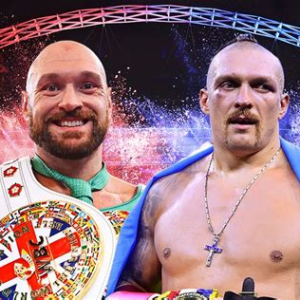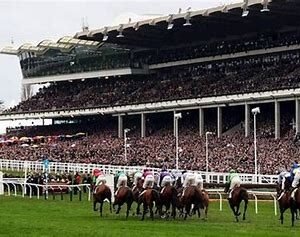The 2022 FIFA World Cup wasn’t short of epic clashes, but Argentina prevailing 3-0 triumph over Croatia in the semi-final stands out as a strategic masterclass. This matchup wasn’t fair, almost Lionel Messi enchantment; it was a fight won and misplaced in the motor room – the midfield. Let’s dive into the lineups chosen by Lionel Scaloni (Argentina) and Zlatko Dalić (Croatia), exploring the strategies behind their selections.
Argentina: Involvement Meets Youthful Vigor
Argentina selected for a 4-4-2 arrangement, prioritizing control in the midfield. This choice was pivotal considering Croatia’s imposing trio of Luka Modrić, Mateo Kovačić, and Marcelo Brozović – renowned for their passing ability and capacity to direct the tempo.
Anchoring the Defense:
Emiliano Martínez, Argentina’s rock-solid goalkeeper, was given a secure combination of hands at the back. The center-back pairing of Cristian Romero and Nicolás Otamendi offered a mix of encounter and aggression.
Veteran Control in Midfield:
Leandro Paredes, known for his strategic insights and capacity to break up play, was brought back into the starting eleven. His presence alongside the ever-reliable Rodrigo De Paul pointed to stifle Croatia’s creative start in the center of the park.
Fresh Legs and Attacking Threat:
Enzo Fernández, a youthful disciple, partnered with Alexis Mac Allister on the flanks. Their vitality and spilling abilities, given width and a consistent attacking risk, extended the Croatian defense.
The Initiate:
Forthright, the notorious Lionel Messi and Julian Álvarez shaped a strong organization. Messi’s playmaking capacities were complemented by Álvarez’s pace and finishing prowess.
This lineup tended to Argentina’s requirement for midfield control whereas keeping up a solid attacking presence. Paredes and De Paul’s encounter countered the Croatian midfield maestros, whereas Fernández and Mac Allister’s dynamism made openings for the deadly duo of Messi and Álvarez.
Croatia: Modrić Leads the Orchestration
Croatia countered with a 4-3-3 formation, depending intensely on their experienced midfield to control the game and manage the pace.
Solid Backline:
Dominik Livaković, a solid shot-stopper, watched the Croatian goal. The cautious line comprised Dejan Lovren, Joško Gvardiol, Josip Juranović, and Borna Sosa, advertising a blend of involvement and attacking aim from the full-backs.
The Maestro and his Lieutenants:
The midfield trio of Modrić, Kovačić, and Brozović was the heart and soul of the Croatian approach. Their capacity to control ownership, switch play, and make openings was key to their victory all through the tournament.
Attacking Advances:
Andrej Kramarić, Mario Pašalić, and Ivan Perišić formed the attacking line. Kramarić’s hold-up play and link-up capacity were significant for bringing the wingers, Perišić and Pašalić, into the game.
Croatia’s procedure was clear – rule ownership through their midfield maestros and utilize the pace and expertise of their wingers to make chances for Kramarić. In any case, Argentina’s midfield matching of Paredes and De Paul viably neutralized Modrić’s impact, driving Croatia to resort to long balls and cheerful crosses, which the Argentine defense managed with comfortably.
The Strategic Triumph: Argentina’s Midfield Control
The differentiating approaches highlighted a pivotal strategic fight. Argentina’s choice to prioritize midfield control with Paredes and De Paul demonstrated to be the masterstroke. They effectively disturbed Croatia’s passing cadence and constrained the adequacy of their midfield trio. This permitted Argentina’s young wingers, Fernández and Mac Allister, to abuse the space on the flanks and make openings for Messi and Álvarez.
While Croatia’s midfield boasted experience and specialized brilliance, Argentina’s strategic setup and the vitality of their youthful midfielders eventually demonstrated predominance. This strategic triumph cleared the way for Argentina’s prevailing execution and their inevitable World Container triumph.
A Learning Involvement for Croatia
In spite of the misfortune, the Croatia group showed their battling soul and strategic ability all through the competition. The Argentina diversion highlighted the significance of adjusting to their opponent’s strategies and capitalizing on early scoring openings. This involvement will without a doubt serve them well in future tournaments.
Conclusion
The Argentina vs. Croatia clash wasn’t just a battle of personal stars; it was a showcase of differentiating strategies and a confirmation to the significance of midfield control in cutting edge football. Argentina’s vital approach, with the right mix of encounter and energetic abundance, eventually drove them to glory.
FAQs:
What formation did Argentina use?
Argentina opted for a 4-4-2 formation, prioritizing control in the midfield.
Who were the key players in Argentina’s midfield?
Leandro Paredes and Rodrigo De Paul were entrusted with smothering Croatia’s creative start, whereas Enzo Fernández and Alexis Mac Allister were given width and attacking danger on the flanks.
What formation did Croatia use?
Croatia countered with a 4-3-3 formation, depending intensely on their experienced midfield trio of Modrić, Kovačić, and Brozović to control the game.
What was Croatia’s attacking strategy?
Croatia pointed to overwhelming possession through their midfield and utilized the pace of their wingers, Perišić and Pašalić, to make chances for Kramarić.
Why did Argentina win the midfield battle?
Argentina’s midfield matching of Paredes and De Paul viably disturbed Croatia’s passing beat and constrained the adequacy of their star midfielder, Modrić.
Who were the standout performers for Argentina?
Lionel Messi (2 goals) and Julian Álvarez (1 goal) showcased their attacking prowess.
Did substitutions play a part in Argentina’s victory?
Yes, bringing on new legs like Ángel Di Maria and Lautaro Martínez advanced smothered Croatia’s potential fightback.
Were there any shocks in the lineups?
Argentina’s choice to bring Paredes into the beginning eleven was a slight astonishment, as he hadn’t played a full match in the past rounds. Be that as it may, his involvement demonstrated pivotal in countering the Croatian midfield.
How did Croatia endeavor to deal with Messi’s threat?
Croatia utilized a zonal checking framework, meaning distinctive players were mindful of stamping Messi depending on his position on the field. Be that as it may, Messi’s development and spilling abilities demonstrated as well much to handle at times.
Did the refereeing decisions have any effect on the game?
The penalty awarded to Argentina in the to begin with half was a major talking point. A few argued it was a soft decision, but it eventually proved to be a turning point in the match.
To read more, click here





